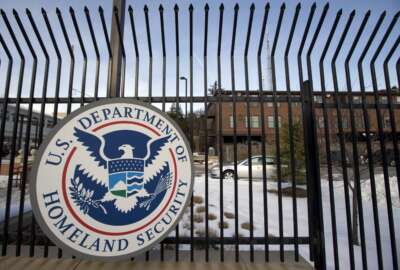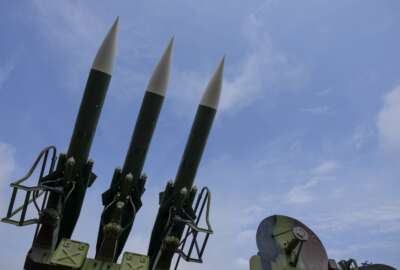“I always talk about Raytheon Intelligence and Space being the eyes and ears of our customers. We need to provide solutions to all of our customers so that they can see before they're seen, and hear and before they're heard. And in every case, it is always from one fundamental truth, which is that before you defeat a threat, you’ve got to be able to find it.”
Roy Azevedo
President, Raytheon Intelligence and Space
"I've been in this industry more than 30 years, and I can't walk into the Pentagon today without having each of the services talk about how they're going to fight jointly with the other services with JADC2 as an enabler."
Ray Azevedo
President, Raytheon Intelligence and Space
"I can't talk to a senior executive where we're not hearing that they need solutions faster, faster than ever before."
Roy Azevedo
President, Raytheon Intelligence and Space
June was the two-year anniversary of the Defense Department’s first ever space strategy. DoD’s goal of the new document was to develop a path for it to advance space power to be able to compete, deter and win in a complex security environment.
One of the four priority lines of effort in the strategy is to integrate military space power into national, joint, and combined operations.
Roy Azevedo, the president of Raytheon Intelligence and Space, said speed to decisions is at the heart of that priority line of effort. And underlying that goal is the Joint All-Domain Command and Control (JADC2) initiative.
“I can’t talk to a senior executive where we’re not hearing that they need solutions faster, faster than ever before,” Azevedo said on the discussion Accelerating Decision Making by Enabling JADC2. “I always talk about Raytheon Intelligence and Space being the eyes and ears of our customers. We need to provide solutions to all of our customers so that they can see before they’re seen, and hear and before they’re heard. And in every case, it is always from one fundamental truth, which is that before you defeat a threat, you’ve got to be able to find it.”
In March, DoD released the unclassified version of its JADC2 strategy, more than a year after announcing it. The overall strategy explicitly embraces a “fail fast” mentality, starting with seven distinct projects aimed at achieving minimum viable products before the Pentagon even finalized its strategy. Those are largely focused on identity and access management, cloud computing, zero trust and other technology enablers.
All of these foundational technologies will rely on the related data fabric DoD is developing at the services level, but coordinated across the department.
Azevedo said the goal for DoD is to get data that is high quality, secure and accessible from all domains to the people who need to make decisions fast.
Valiant Shield 2022
Raytheon Space and Intelligence joined DoD and other companies in the recent joint exercise called Valiant Shield 2022 that took place in Guam and concluded in mid-June to demonstrate some of the basic tenets of JADC2.
“We have a modified 727 aircraft that participated in the exercise and we were able to demonstrate multi domain information being shared to distributed defense systems,” Azevedo said. “So the way that we did that is we had the 727, KC 135 and four F/A 18s, where there was a simulated environment, and our 727 used radar and electronic intelligence to identify that simulated threat, distributed to the F/A 18s team so that they prosecute what they saw, and it included a command and could control center in the continental United States, so it was multi domain distributed defense systems information, fast and securely.”
He said the exercise demonstrated something that hadn’t been done before, which is this ability to distribute data through multi-domain operations.
The exercise required Raytheon Intelligence and Space to take some “calculated risks” because the technology and integrations were cutting edge.
Azevedo said DoD asked them to do some modifications ahead of the exercise and they were able to make the changes and prove out the concept.
AI/ML driving better decisions
DoD and the services will take the results from the Valiant Shield exercise and decide how to put what they learned into operations in the coming years as JADC2 continues to evolve, Azevedo said.
“When you step back and take a look at Raytheon Intelligence and Space, we’ve got sensors and capabilities in every domain, cyberspace, under sea, surface, air and then in space, of course. We have this data so how are we able to analyze that data? How are we able to transmit it securely to all those that need it? And so those are the kinds of things that we work on every single day,” he said. “What are the courses of actions that commanders can take, using artificial intelligence and machine learning with all of this data? That is absolutely critical to the future of our forces.”
Raytheon Intelligence and Space applied AI and ML algorithms to the ever-increasing large amounts of data during the exercise. Azevedo said while the pilots and operators made the decisions, the AI and ML tools helped present them with the best data to drive those decisions.
Azevedo said he’s excited about the potential of JADC2 and the collaboration and coordination that is happening across DoD.
“I’ve been in this industry more than 30 years, and I can’t walk into the Pentagon today without having each of the services talk about how they’re going to fight jointly with the other services with JADC2 as an enabler,” he said. “While not everybody uses the same language, everyone has the same intent and they know how important it is in a contested environment to work jointly.”
Listen to the full show:
Copyright
© 2025 Federal News Network. All rights reserved. This website is not intended for users located within the European Economic Area.









